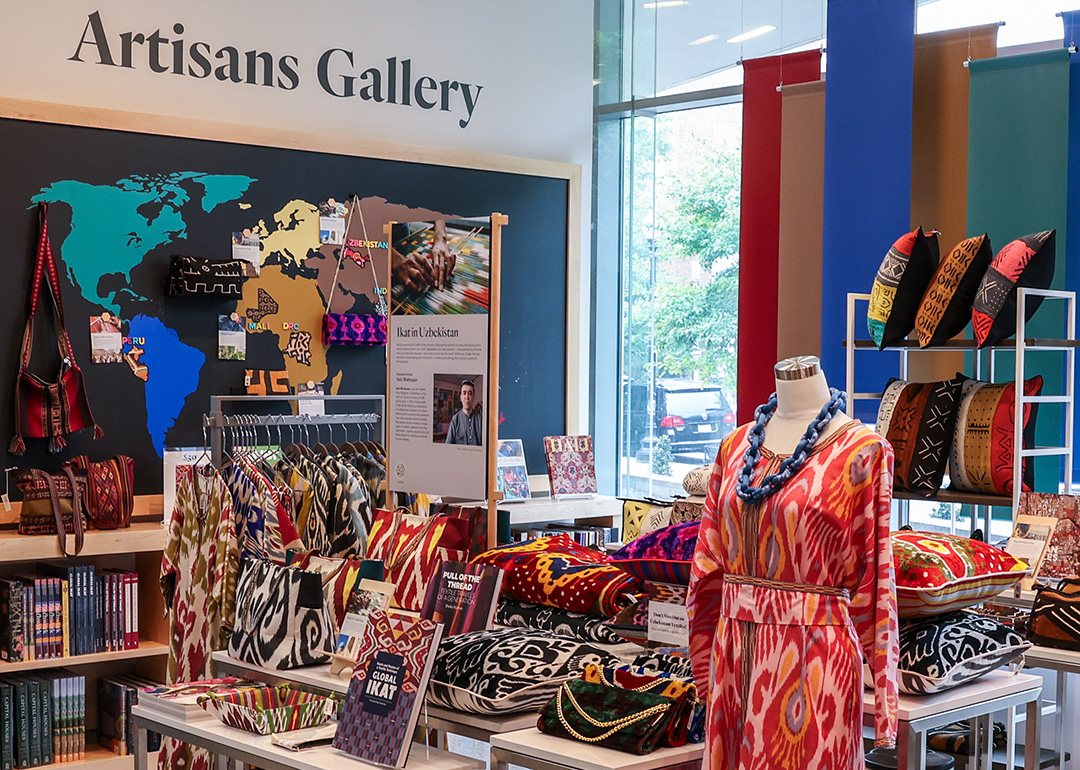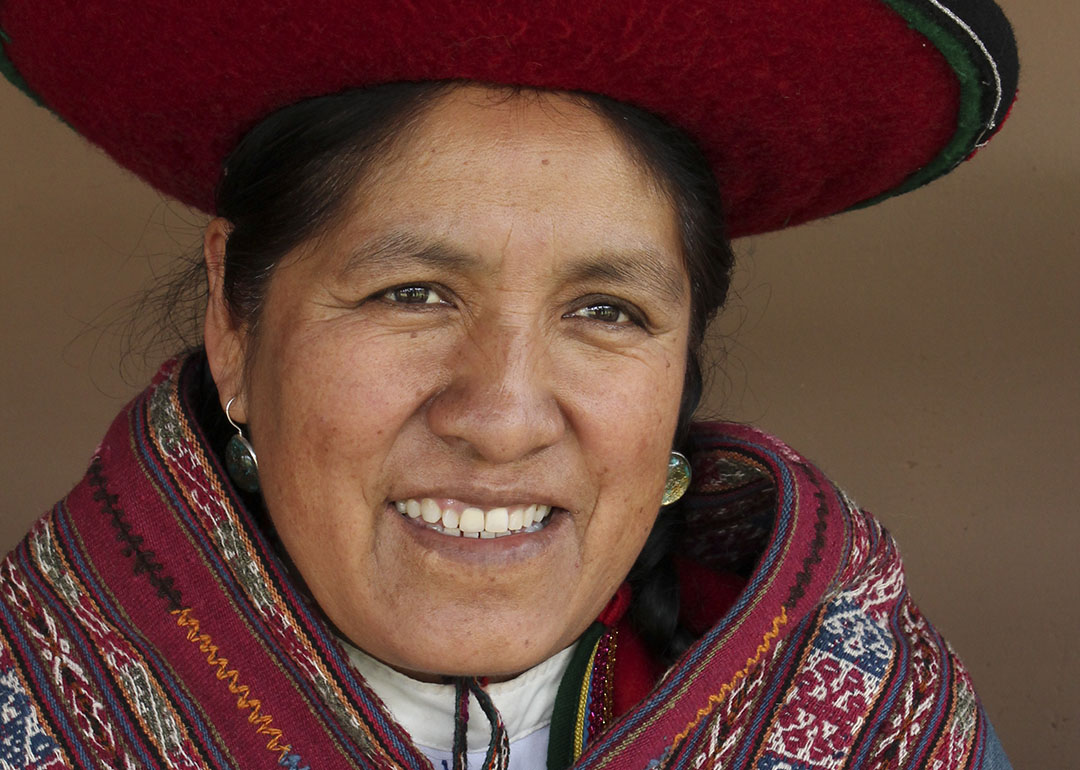Textile Traditions
The Artisans Gallery features rotating displays and textiles that relate to the museum collections. We currently feature the following textile traditions:
Kuba Cloth in the Democratic Republic of the Congo
From the 17th to the 20th century, neighboring tribes in central Africa united as the Kuba Kingdom. Traditional Kuba textiles are woven from raffia palm tree fiber. Historically, men cultivated the palms and wove strips of cloth, and women stitched the pieces together, dyed them and embellished them with bold geometric patterns. Hundreds of patterns exist to describe events, objects or places, as well as to honor the maker or the recipient.
Kalamkari in India
“Kalamkari” is a multistep process for adding pattern to cloth using a handmade pen. With “kalam” meaning “pen” and “kari” meaning “craftsmanship,” the Indian technique centers around hand-painting mordants that chemically fix dyes onto a prepared textile to create designs. After painting, the cloth can be processed through a number of dye baths and finished with additional hand-painted details. Originating in the Deccan region of India, the tradition was popularized through textile exports to Southeast Asia and Europe.
Batik in Indonesia
Batik is a wax-resist dyeing technique that originated on the island of Java in Indonesia. An artist creates patterns by applying liquid wax, which repels dye, to fabric with a stamp or canting tool. Next, the fabric is dyed, and then the wax is removed. The process is repeated for each color. In Indonesia, batiks are often symbolic and meant to be worn by particular groups of people for specific occasions.
Bogolanfini in Mali
In the Bambara language used in Mali, “bogolanfini” translates to “bogolan,” meaning “made from mud,” and “fini,” meaning “cloth.” Men traditionally weave the cloth, and women dye it yellow and then paint details with dye made from fermented river mud. After being washed, dyed and painted multiple times to achieve the desired color, the cloths are left to bleach in the sun. Bogolanfini have traditionally been worn for spiritual protection, especially during significant life events.
Adire in Nigeria
The term “adire” comes from the Yoruba “adi,” meaning “tie,” and “are,” meaning “dye.” Practiced by the Yoruba people in Nigeria, this process of resist-dyeing typically starts with using raffia and starch to tie off different areas of cotton cloth. The cloth is then immersed in large indigo dye vats, where the tied areas create patterns against a blue background. Today, resist-dyeing techniques for adire include block printing and folding textiles by hand.
Alpaca Fiber in Peru
Alpacas are indigenous to the Peruvian Andes, and their soft fleece is central to the region’s rich textile history. Women and children in rural mountain villages spend much of their time tending alpacas, llamas and sheep — shearing their fleece once a year to weave at home or sell in bulk at the market. Alpaca fiber is prized around the world for its warmth and softness.
Ikat in Uzbekistan
Ikat (pronounced EE-kaht) is the process of decorating textiles by tying and dyeing yarns before weaving them into cloth. Uzbekistan’s rich ikat tradition — characterized by its bold colors and abstract designs — has come to embody this iconic technique. Today, the ikat aesthetic inspires designers worldwide in creating everything from couture gowns to home goods.

Block Printing in India
Block printing has been used in India for thousands of years as a way to add pattern to textiles. To create designs, artisans dip carved wooden blocks into a dye or mordant and then press them directly onto fabric. Sometimes artisans use these blocks to apply a resist so that the inverse pattern will emerge after dyeing. Multiple blocks may be used to introduce additional colors, layer by layer.

Shibori in Japan
Shibori is a centuries-old Japanese method of resist-dyeing fabrics. To create shibori patterns, an artist tightly binds or stitches sections of cloth to prevent color from penetrating through. The artist can knot the fabric on itself or tightly wrap thread around bunches of cloth before dyeing. After dyeing, the artist removes the binding to reveal the finished pattern. Traditional shibori can produce a number of different patterns, including arashi, kumo, itajime and ne-maki.

Suzani in Uzbekistan
With its name derived from the Farsi word "suzan" (needle), “suzanis” are large, embroidered textiles that have been made by women in Uzbekistan and other parts of Central Asia for hundreds of years. Used for many decorative functions ranging from bed covers to festive backdrops, suzanis are traditionally made by a bride for her dowry and displayed as a sentimental testament to her sewing skills.

Jacquard in Japan
A Jacquard loom is a sophisticated weaving machine that can produce fabrics with complex designs. Instead of being printed or embroidered on the surface, a jacquard pattern is built directly into the fabric as it is being woven. The loom independently manipulates each thread, allowing for detailed and textured designs, and can combine a wide range of materials.













